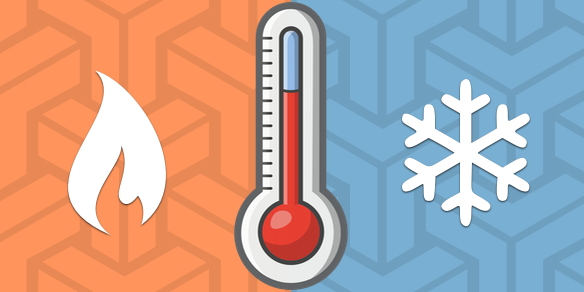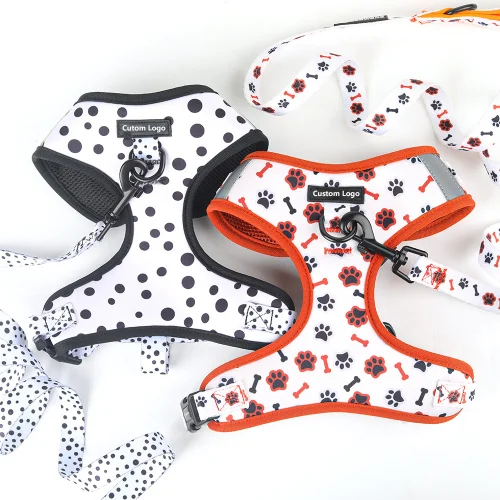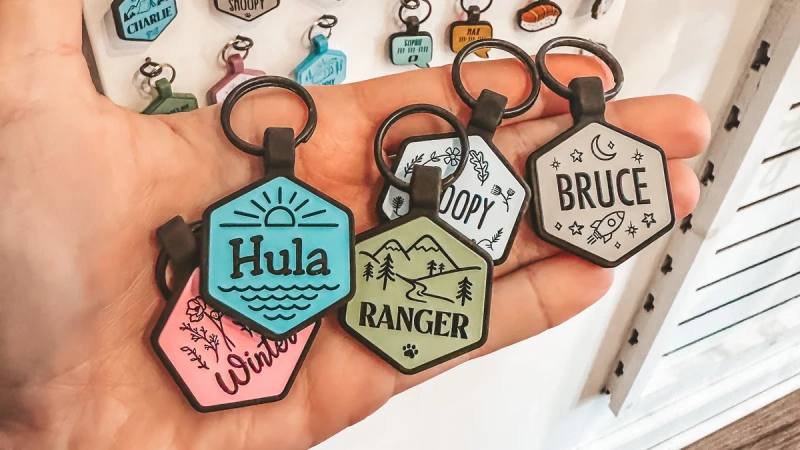Neoprene has emerged as a popular material choice for dog harnesses, offering distinct advantages that make it particularly suitable for both everyday use and specific activities. This comprehensive analysis will examine why neoprene is considered a good material for dog harnesses and what factors to consider before making a purchase.
Key Benefits of Neoprene in Dog Harnesses
1. Comfort and Padding Features
- Cushioning Effect: Neoprene provides superior padding with its soft, cushion-like texture, making it especially beneficial for dogs with sensitive skin or those prone to chafing.
- Pressure Distribution: The material excels at shock absorption, effectively distributing pressure across the dog’s body during walks or sudden movements.
- Anatomical Support: The flexible nature of neoprene allows it to conform to your dog’s body shape, providing customized comfort.
2. Durability Characteristics
- Superior Tear Resistance: Neoprene demonstrates remarkable durability, being five times more resistant to tears and abrasions compared to standard fabrics.
- Long-term Performance: The material maintains its structural integrity even with regular use, making it cost-effective for long-term use.
- Impact Resistance: Neoprene’s ability to absorb shock helps protect the harness from wear during active use.
3. Water-Resistant Properties
- Moisture Protection: Neoprene absorbs less than 5% of its weight in water, keeping your dog relatively dry during wet conditions.
- Quick-Drying: The material’s water-resistant properties allow it to dry quickly after exposure to moisture.
- Weather Adaptability: Performs well in various weather conditions, from rain to snow.
Weather Performance Analysis

Hot Weather Considerations:
- Breathability: Features a porous structure that allows for air circulation.
- Temperature Management: Some designs incorporate mesh panels for enhanced ventilation.
- Moisture Wicking: Helps manage sweat and moisture during warm weather activities.
Cold Weather Benefits:
- Insulation Properties: Provides natural insulation to help maintain body temperature.
- Wind Protection: Offers some protection against cold winds.
- Comfort in Cold Conditions: Maintains flexibility even in lower temperatures.
Practical Considerations and Limitations

1. Fit and Adjustability Factors
- Proper Sizing: Requires accurate measurements for optimal performance.
- Adjustment Points: Look for models with multiple adjustment points for a customized fit.
- Movement Range: Should allow full range of motion without restriction.
2. Maintenance Requirements
- Cleaning Protocol: Easy to clean with mild soap and water.
- Drying Process: Should be air-dried away from direct heat sources.
- Regular Inspection: Check for wear patterns and potential damage points.
3. Potential Drawbacks
- Heat Retention: May trap heat in extremely warm conditions.
- Initial Cost: Generally more expensive than basic nylon harnesses.
- Weight: Slightly heavier than some alternative materials.
Comparison with Other Common Harness Materials
1. Neoprene vs. Nylon
| Feature | Neoprene | Nylon |
|---|---|---|
| Durability | Superior abrasion resistance | Strong but less abrasion resistant |
| Comfort | Better padding and comfort | Moderate comfort |
| Weather Resistance | Performs better in wet conditions | Less effective against moisture |
| UV Resistance | Better resistance to sun damage | Susceptible to UV exposure |
2. Usage Recommendations
Best Suited For:
- Active dogs requiring extra padding
- Water-loving breeds
- Dogs participating in outdoor activities
- Dogs with sensitive skin or prone to chafing
- Year-round use in moderate climates
Less Suitable For:
- Dogs in extremely hot climates
- Dogs with thick double coats
- Budget-conscious buyers seeking basic harnesses
Expert Tips for Choosing a Neoprene Harness
1. Essential Features to Look For:
- Reinforced stitching at stress points
- Quality hardware (D-rings, buckles)
- Reflective elements for visibility
- Multiple adjustment points
- Proper ventilation design
2. Sizing Guidelines:
- Measure chest girth carefully
- Allow for slight growth in younger dogs
- Consider seasonal coat changes
- Ensure two-finger gap for comfort
FAQ
What if my dog is uncomfortable in the harness?
If your dog shows signs of discomfort, such as whining or trying to escape, recheck the fit and adjust accordingly. Consider trying a different style of harness that better suits your dog’s body shape.
How often should I check the harness fit?
Regularly check the fit after weight changes, if your dog is still growing, seasonally (due to coat thickness), and before and after grooming sessions.
Can a harness hurt my dog?
Yes, if it’s too tight or improperly fitted. Issues may include chafing, restricted breathing, or muscle strain. Always adjust the harness correctly.
Are there specific harnesses for different activities?
Yes, for example:
- Running or hiking: Lightweight, breathable harnesses
- Water activities: Quick-drying materials
- Car travel: Crash-tested harnesses
Conclusion
Neoprene proves to be an excellent material choice for dog harnesses, particularly when quality and durability are priorities. Its combination of comfort, durability, and water resistance makes it especially suitable for active dogs and those requiring extra padding. While the initial cost may be higher than basic materials, the longevity and performance benefits often justify the investment.
At Wedogy, we’re committed to providing high-quality neoprene dog harnesses tailored to meet your needs. Whether you are looking to customize products or source high-quality pet accessories, we invite you to partner with us. Contact us today to explore collaboration opportunities!



